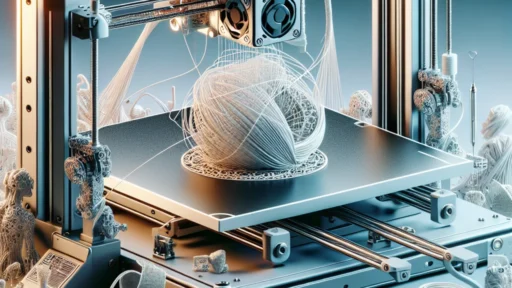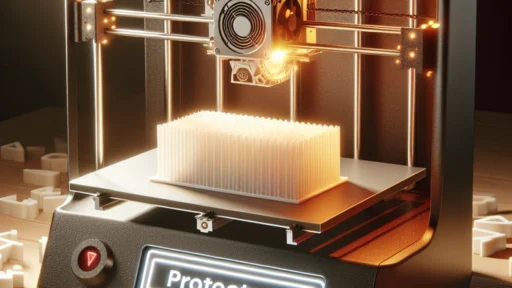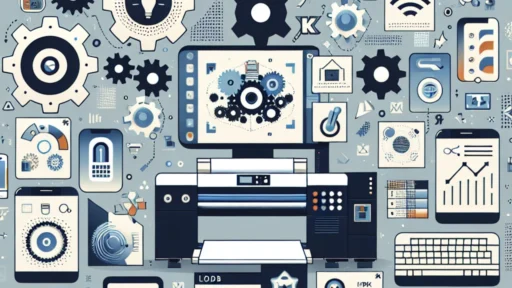Safety Precautions for 3D Printing at Home
3D printing has burst into the mainstream, transforming the way we create everything from toys to prototypes. It’s exciting to watch a design come to life layer by layer, but while it unleashes creativity, it also brings some safety considerations that every enthusiast should be aware of. Whether you’re a seasoned maker or just getting started, it’s crucial to keep safety at the forefront of your 3D printing journey. Here’s a friendly guide to help ensure that your home 3D printing experience is both fun and safe.
Ventilation Is Key
One of the primary safety concerns with 3D printing, particularly with Fused Deposition Modeling (FDM) printers, is the potential for harmful fumes. As your printer heats up and extrudes filament, it can release volatile organic compounds (VOCs) and ultrafine particles (UFPs). It’s essential to set up your printer in a well-ventilated area. Open windows or use a fan to disperse any potentially harmful fumes.
If you’re serious about safety, consider investing in an air purifier with a HEPA filter designed to capture these kinds of particles. This can go a long way in creating a safer environment while you print.
Use Protective Gear
Depending on the material you’re working with, protective gear may be necessary. If you’re handling materials like resin (commonly used in SLA printing), ensure you wear gloves and safety goggles to protect against skin contact and splashes. Even with FDM printers, it might be smart to have gloves on hand when changing filament or performing maintenance.
Additionally, avoid wearing loose clothing or accessories that might get caught in the printer. It may feel like common sense, but you’d be surprised how easily distractions can lead to accidents—especially in the excitement of bringing a new design to life!
Proper Setup and Maintenance
Before you start printing, it’s a good idea to double-check your printer setup. Ensure that surfaces are stable and that your printer is secure and leveled properly. Each time you set up to print, look over the wiring and connections. Broken or frayed cords can pose electric hazards, so if you spot anything amiss, it’s best to replace those components before using the printer.
Also, regularly cleaning your printer not only ensures better performance but also helps to prevent dust from accumulating on sensitive parts. Dust can interfere with your prints and become a fire hazard if it gets too close to hot components.
Know Your Materials
Different printing materials have their own safety profiles. Common thermoplastics like PLA and ABS have distinct properties, and it’s essential to consider these before proceeding. PLA, often made from cornstarch, tends to be safer and has less of an odor than ABS, which can release unpleasant fumes during printing. If you’re using materials like nylon or PETG, they may also have specific safety guidelines worth following.
When experimenting with new materials, read the manufacturer’s guidelines carefully. Knowing how materials behave during printing can keep you and your workspace safe.
Fire Safety
This may sound dramatic, but it’s always good to be cautious: 3D printers can pose a fire risk, especially if left running unattended. Ensure that your printer is placed away from flammable materials and monitor your prints, especially if you’re working with larger designs that require long print times. It adds a layer of comfort knowing you’re keeping an eye on things while your creation takes shape.
Investing in a smoke detector in your workspace is an excellent idea, too. In the rare event of an overheating issue, quick detection can help you get things under control before it escalates.
Risk of Burns
The hot end of your 3D printer can reach temperatures of over 200°C (or 392°F) during printing. It’s essential to remember that while you’re focused on getting the perfect print, you must also watch out for potential burns. Avoid touching any moving parts, and let the printer cool down completely before performing any maintenance or changing filament.
Informed Community
Finally, becoming part of the 3D printing community can significantly enhance your safety knowledge. Online forums, social media groups, and local maker spaces are great resources. By sharing experiences and tips from seasoned 3D printing veterans, you can stay updated on safety practices and emerging materials.
As you embark on your 3D printing journey at home, keeping safety in mind can transform the experience from merely functional to positively thrilling. 3D printing can amplify your creativity when you know you’re doing it in a safe environment. Keep these guidelines close by, and don’t hesitate to reach out to other makers—after all, safety is a shared responsibility, and you can enjoy the endless possibilities of 3D printing while fostering a safe, creative community. Happy printing!






